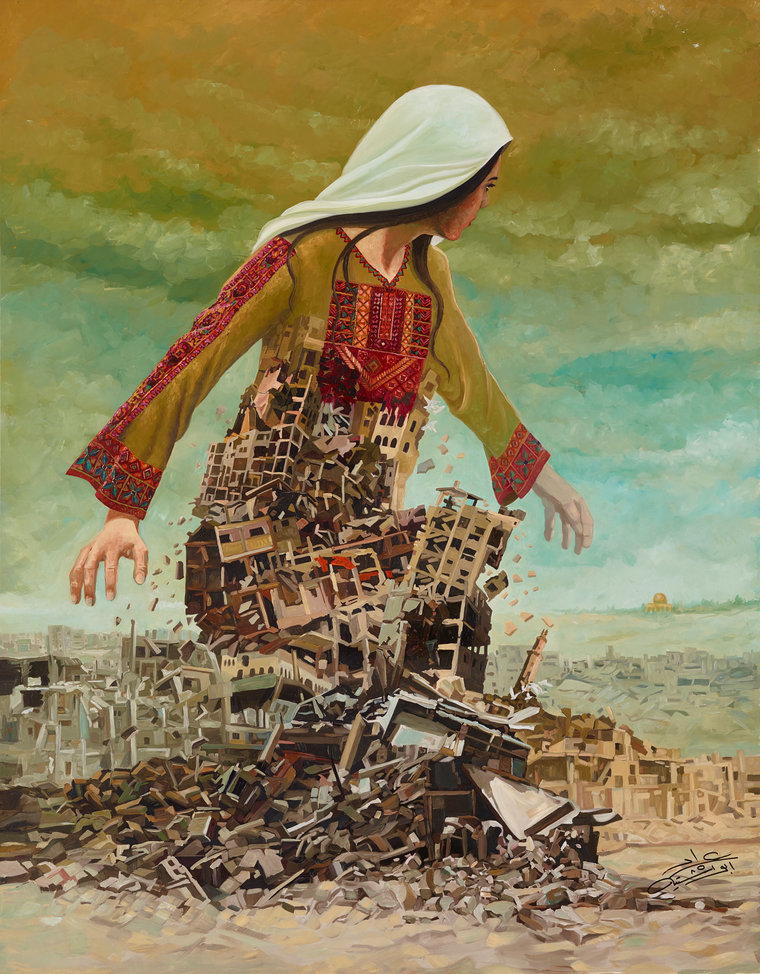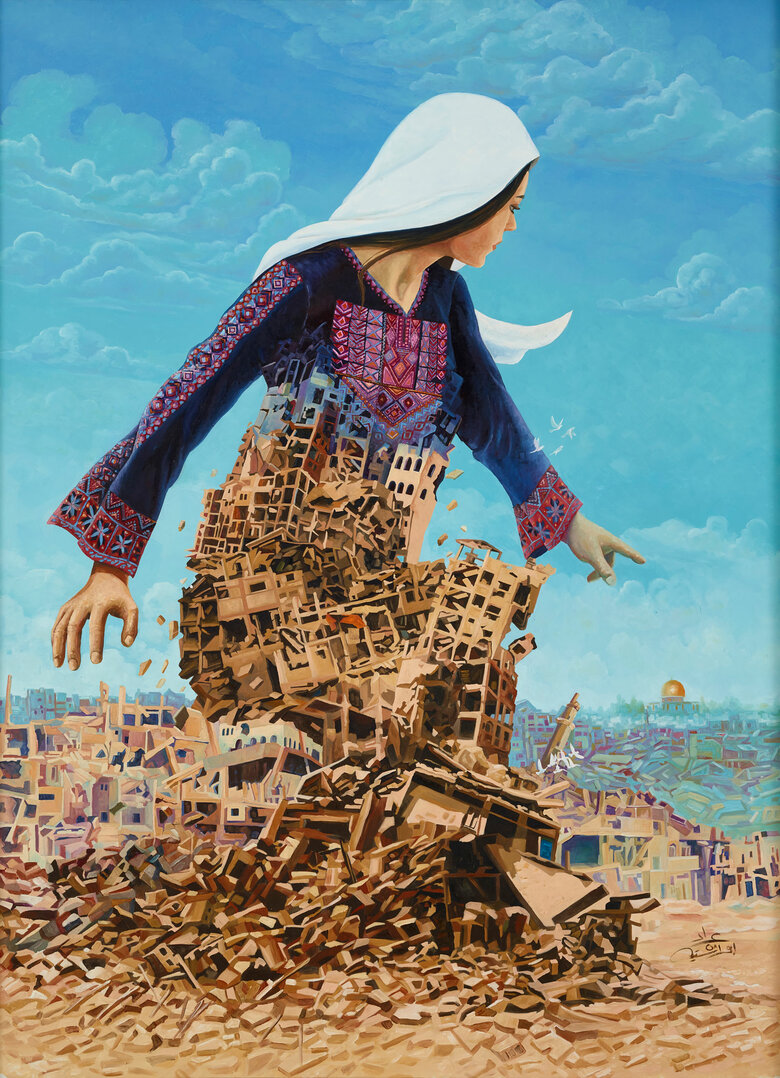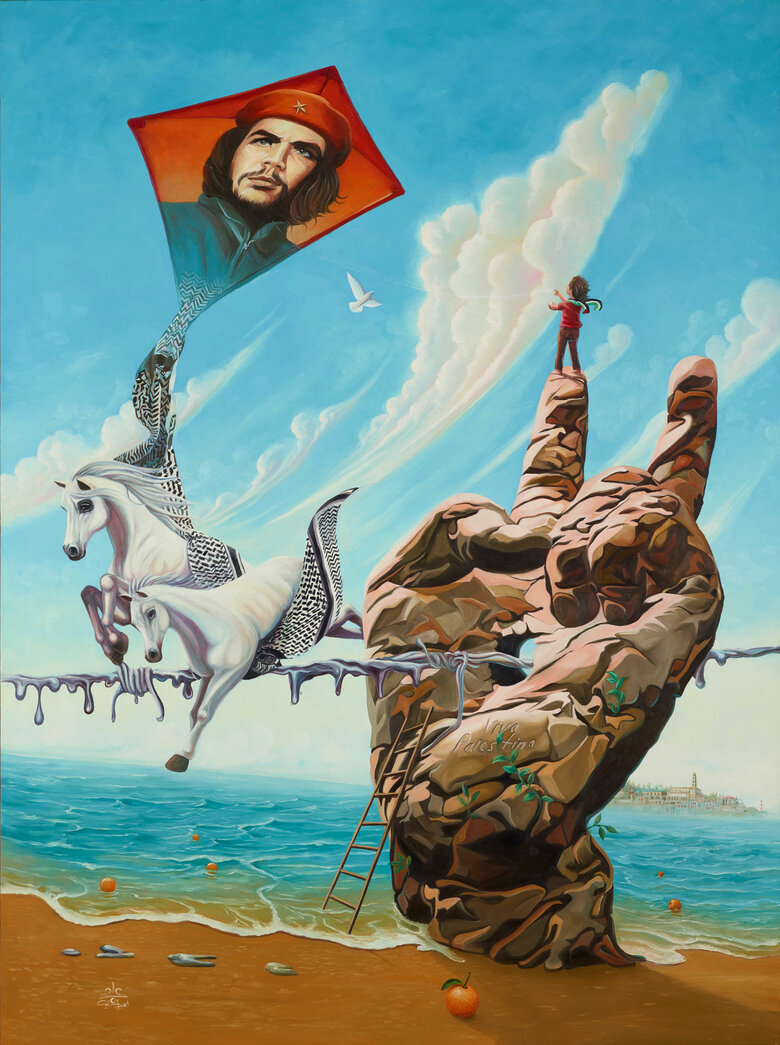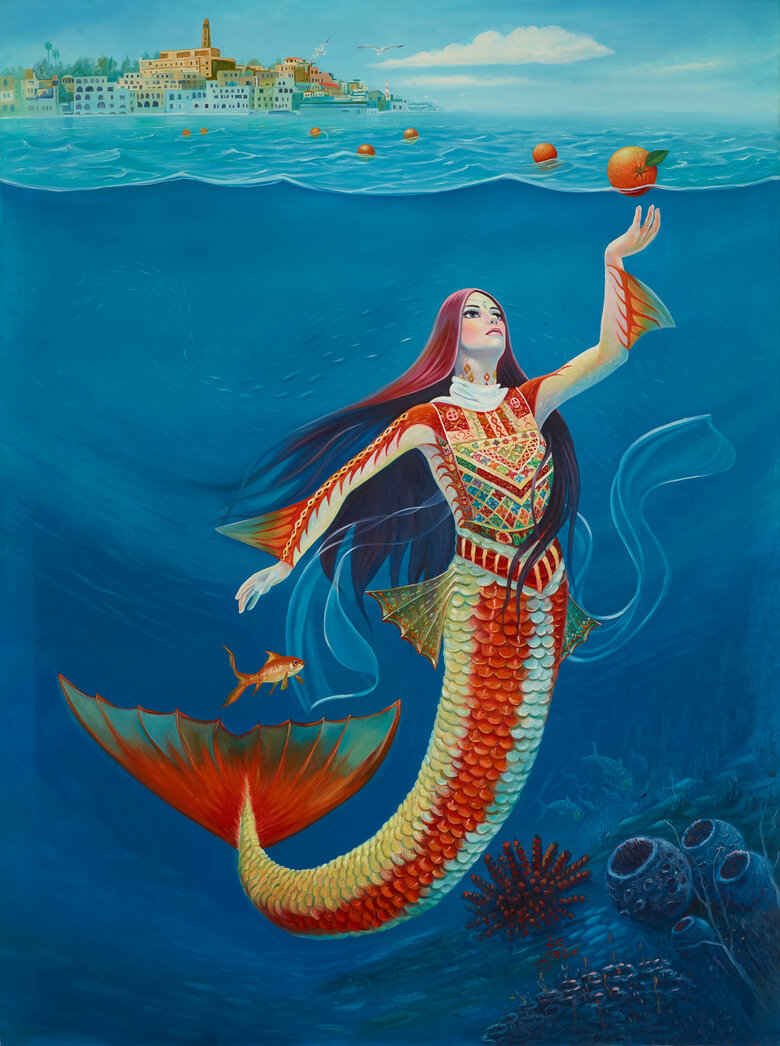We Shall Return, 2014, by Imad Abu Shtayyah shows a Palestinian woman, dressed in a long, traditional embroidered dress or thobe, rising from the ruin of destroyed houses. The palette of this piece is vibrant and bright, like many of Abu Shtayyah’s works, with great contrast between the red and green colors on the woman’s dress compared to the dulled brown and gray of the ground and rubble.
Abu Shtayyah’s style frequently utilizes symbolic representation, as seen here in his deliberate use of cultural elements such as the thobe, the embroidery or tatriz, the headdress, the mosque in the debris, and the Al Aqsa Mosque in the distance. The use of symbolism is an effective approach in this painting because of the way the artist realistically depicts the wrecked buildings along with the surrealistic image of the giant, powerful woman rising from that devastation. This is in tune with Abu Shtayyah’s recurrent motif of portraying Palestinian women as the primary guardians of culture, tasked with nurturing future generations to honor their heritage, while also driving them to remain resilient.
We Shall Return came to the public eye during the 2014 Israeli aggressions on Gaza when it went viral over social media, and in the process, thrust Abu Shtayyah into the spotlight. The popularity of this piece is due to its underlying promise of hope and revival after destruction, communicated through the woman’s grace of motion and her determination to look away from destruction and towards Jerusalem.
signed in Arabic front lower left



_ImadAbuShtayyah_Front.jpg)


_ImadAbuShtayyah_Front.jpg)





